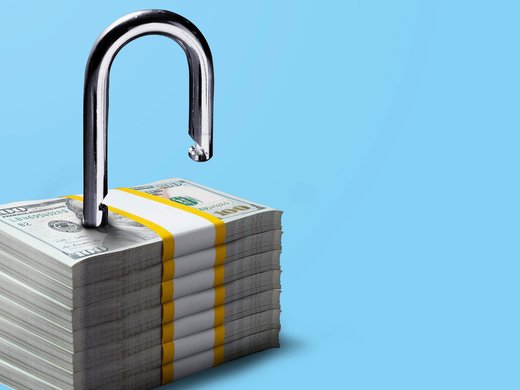Interest rates are lower today than they were in the midst of crisis. If this is global recovery, it doesn’t look like it.
Low rates might easily be explained by the disinflation/deflation pressures in the global economy. In previous recessions, with inflation running, say, at 3%, a Wicksellian "natural" real rate of interest of 2% and a nominal policy rate of 5%, a central banker could reduce the policy rate to 2% to generate a negative real rate of sufficient size to affect spending and investment decisions. In the current malaise (pick your moniker: Lessor Depression, Great Recession, Long Stagnation), with inflation near zero and policy rates at the zero nominal lower bound, the only way to get the negative real rates needed is to drive policy rates below zero and then hope that the pure expectations theory of the term structure drives longer yields low enough to stimulate demand.
This is a pretty straightforward explanation. Negative interest rates are one of the post-crisis pathologies that have infected the global economy, another being the return of the liquidity trap. We have seen these pathologies before; indeed, I fear we are in the 1930s but haven't realized it.
At the same time, the low rates we have seen may reflect other forces, particularly longer-term demographic changes. The way to think about these effects is with the overlapping generations (OLG) model developed by Paul Samuelson in 1958. (For the economics cognoscenti, this is the paper in which Samuelson coined his famous "money as a social contrivance" phrase [1]). While monetary theorists will undoubtedly correct me, the idea that stems from the model is that the real rate of interest — the inter-temporal terms of trade between generations — is equal to the population growth rate. In periods of high population growth, the real interest rate is high; in periods of low population growth, this "biological" interest rate is low.
The intuition on this result is that money and only money allows the transfer of purchasing power across generations (goods spoil and cannot be hoarded for old age). In a growing population, there are fewer older workers than young workers; this implies that for today's workers who will be in retirement in the next period, there will be more workers that will want to trade through time. This means that they can consume more ("save" less) today and enjoy the same post-retirement level of consumption. This implies that the real interest rate is higher.
I'm not sure that the Samuelson "exact consumption-loan" theory fully explains the current quandary with interest rates, but I think it might be worth exploring, particularly its interaction with inflation targeting. About a decade ago, I started work on a paper provisionally entitled “The New-Old Orthodoxy.” What I was worried about at the time was the risk that inflation-targeting could inadvertently lead central banks to disinflation/deflation bias in the event of a severe shock in much the same way that the dysfunctions of the gold standard of the inter-war years propagated deflation and stagnation in the 1930s.
Recall the problem with the dysfunctional gold standard: in contrast to the canonical model, in which the burden of adjustment was shared symmetrically between surplus and deficit countries — the former inflating and the latter dis-inflating — the gold standard of the 1930s featured a defection from the “rules of the game” as surplus countries (principally, the U.S. and France) sterilized gold inflows to avoid inflationary pressures. While this was good policy for them, it had the effect of withdrawing aggregate demand from the global economy and spreading stagnation. (The U.S. recovery didn’t begin, it can be argued, until FDR cut the golden fetters on the U.S. dollar and defaulted on U.S. gold-backed bonds in a commitment to Krugmanesque "irresponsibility").
In a similar vein, I worried that inflation-targeting central banks operating in the Wicksellian Weltaunschauung (described above) would develop an asymmetric reaction function: positive inflation shocks would elicit higher policy rates; deflationary shocks would be viewed as a transitory requiring no action. The "conservative" central banker of monetary economics would, in effect, use the opportunistic disinflation to burnish his reputation as being tough on inflation. Needless to say, I didn't impress my central bank friends with that apostasy. But, while I hate to say it, in Europe at least my fears seem to have been realized.
There is, admittedly, more psychology than economics in this, but given the disruption and damage done to the social capital over the past six years from adherence to (blind faith in?) market dogma, that isn’t necessarily a bad thing. In any event, the weekend is coming and I might just dig that paper out and dust it off.
[1] Paul A. Samuelson, “An Exact Consumption-Loan Model of Interest with or without the Social Contrivance of Money,” The Journal of Political Economy, Volume LXVI, Number 6, December 1958.


